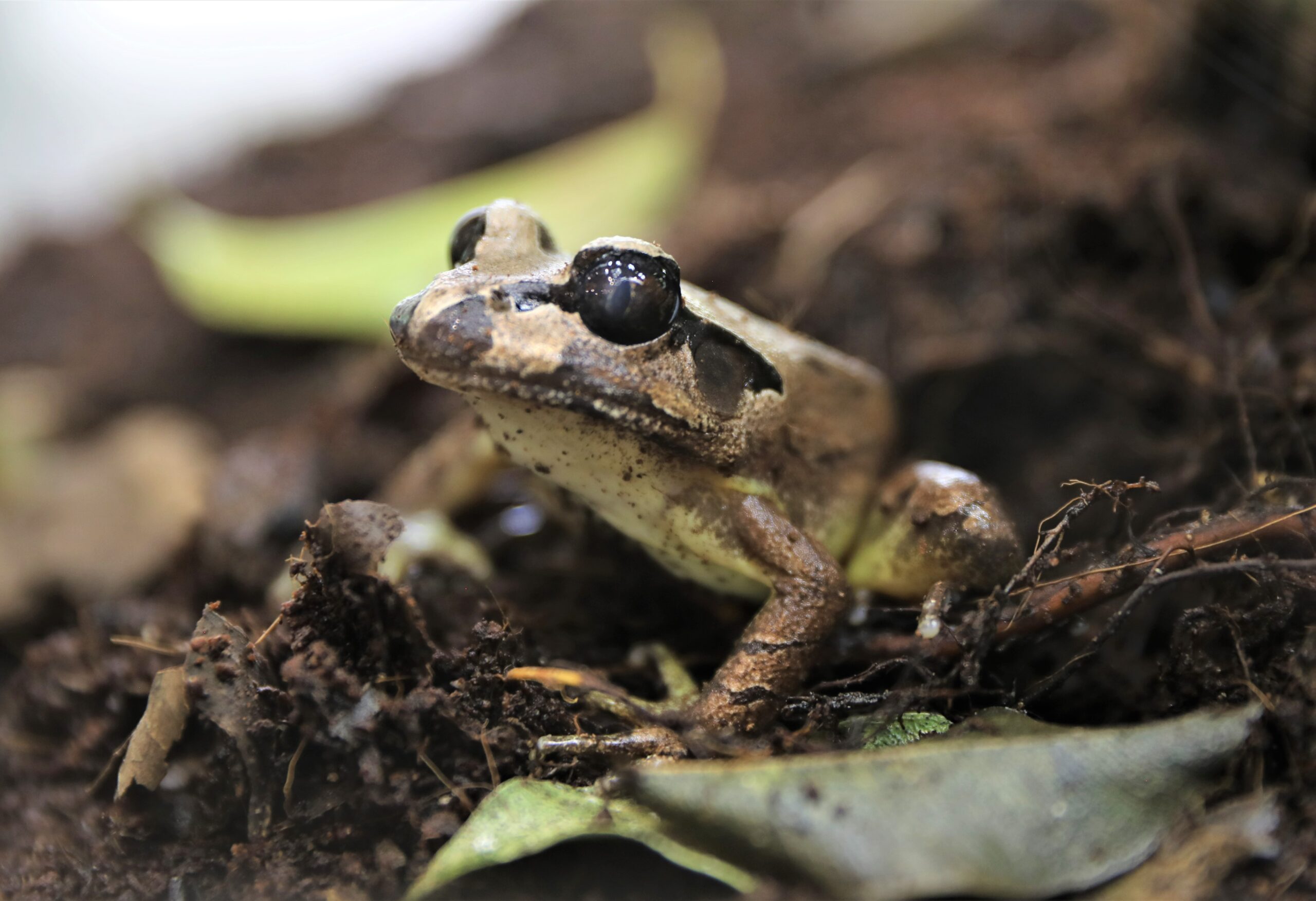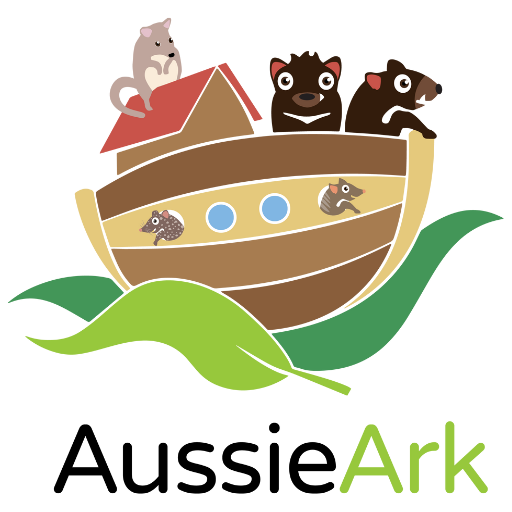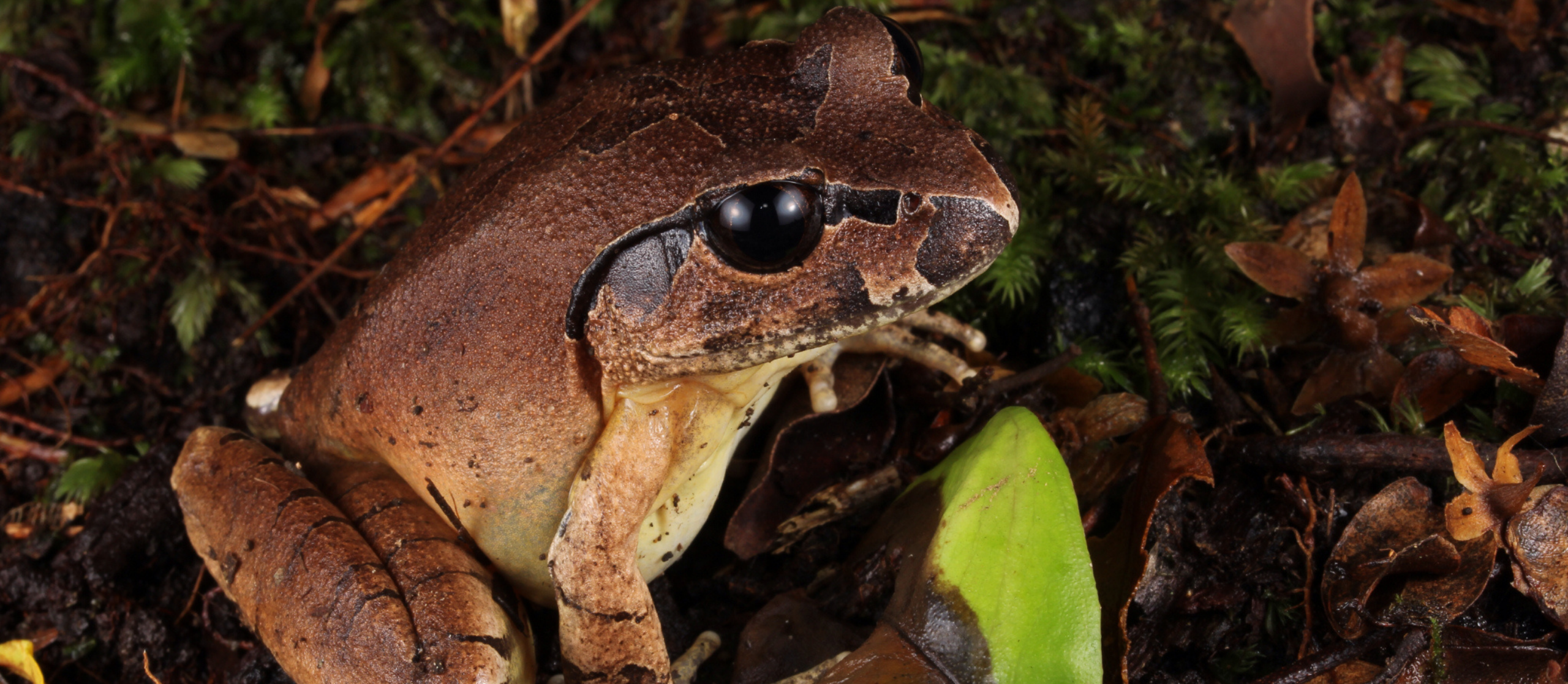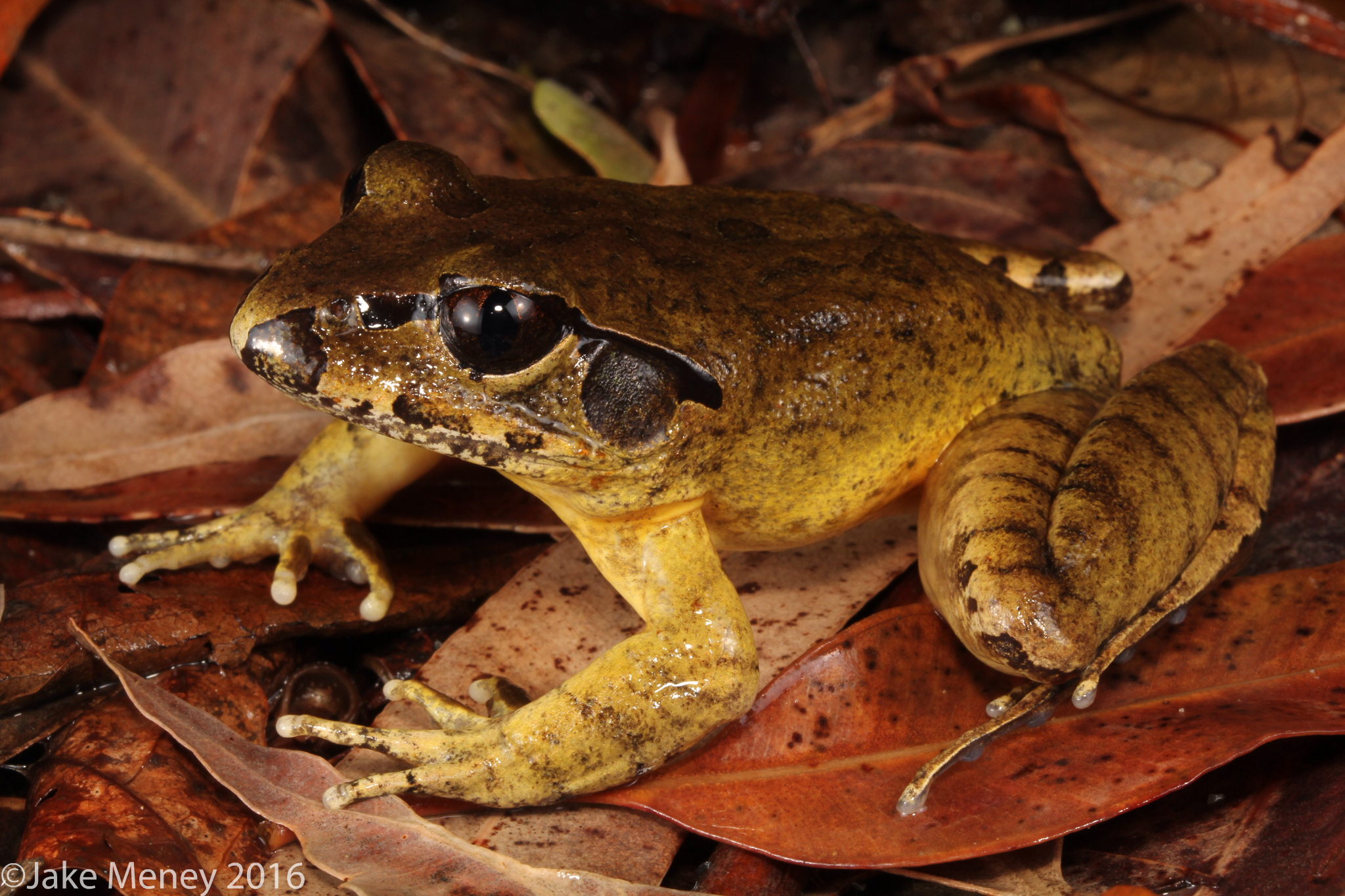22 Mar STUTTERING BARRED FROG
Scientific name: Mixophyes balbus
IUCN Conservation Status: Endangered

Description
The Stuttering Frog is relatively large and muscular, growing to about 8 cm in length. It has large, black eyes and vertical pupils, webbed feet, barred hind legs and a black line from the snout, through the eye and above the ‘ear’. The body colour is brown to olive-green and may be broken into irregular blotches. The underside is creamy-white. The adult has a pale-blue crescent across the upper half of the eye; this, and the call – a stuttering ‘ugh’ or ‘op’, distinguishes the species from other barred frogs. The tadpole is dark brown to black and grows to 6.5 cm in length.
Habitat
The Stuttering Frog is typically found in association with permanent streams through temperate and sub-tropical rainforest and wet sclerophyll forest, rarely in dry open tableland riparian vegetation and also in moist gullies in dry forest. The ecological requirements of adults and larvae are poorly known. The species showed a preference for the interiors of large forest tracts in areas with relatively cool mean annual temperatures. These sites are typically free from any disturbance with a thick canopy and relatively simple understorey. The species occurs along first order streams and is occasionally associated with springs. The species is not associated with ponds or ephemeral pools. Tadpoles do occur with several species of native fish
Distribution
Stuttering Frogs occur along the east coast of Australia from southern Queensland to north-eastern Victoria. Considered to have disappeared from Victoria and to have undergone considerable range contraction in NSW, particularly in south-east NSW. It is the only Mixophyes species that occurs in south-east NSW and in recent surveys it has only been recorded at three locations south of Sydney. The Dorrigo region, in north-east NSW, appears to be a stronghold for this species.
Diet and Behaviour
The Stuttering Barred Frogs feed on insects such as crickets and flies and smaller frogs. They breed in streams during summer after heavy rain and their eggs are laid on rock shelves or shallow riffles in small, flowing streams. As the tadpoles grow, they move to deep permanent pools and take approximately 12 months to metamorphose.
Reproduction
The reproductive biology of the Stuttering Frog is very similar to that of Mixophyes fleayi. Both species construct a nest in the shallow running water (in the gravel or leaf litter) that occurs between pools in relatively wide, flat sections of mountain streams. Approximately 500 to 550 pigmented eggs (2.8 mm diameter) are deposited in a shallow excavation in the stream bed or pasted directly onto bed rock. The eggs have a jelly layer and a sticky coating. Some eggs get mixed in with the leaf litter or gravel but most clump together. The stream microhabitats used by this species for oviposition are limited. Tadpoles develop in pools and shallow water with the aquatic phase of the life cycle lasting approximately one year.
Threats
They were severely impacted during the 2019/ 20 bushfire disaster and like most Australian frog species also suffer from the impacts of feral predators, climate change and disease, such as Chytrid Fungus. Chytrid is a fungus that primarily affects the skin of a frog and can spread extremely quickly through an ecosystem, but also between ecosystems.
How Aussie Ark is helping
The stuttering barred frog calls Conservation Ark home, which is a state-of-the-art breeding facility put in to house frog species and turtles at the Australian Reptile Park. Aussie Ark and the Australian Reptile Park will breed the frogs and house them as they develop into fully grown frogs, before releasing them back into streams and waterways in the wild. Beyond this, the organisations are taking part in projects that are looking at the cause and cure for Chytrid fungus.



